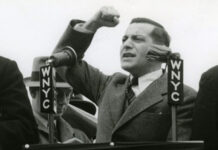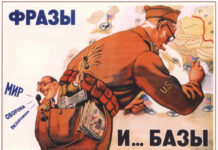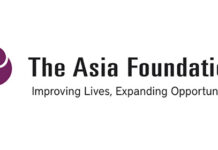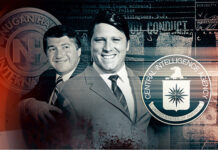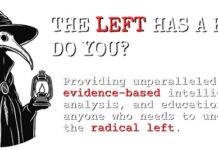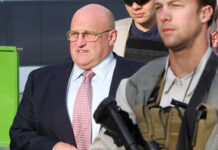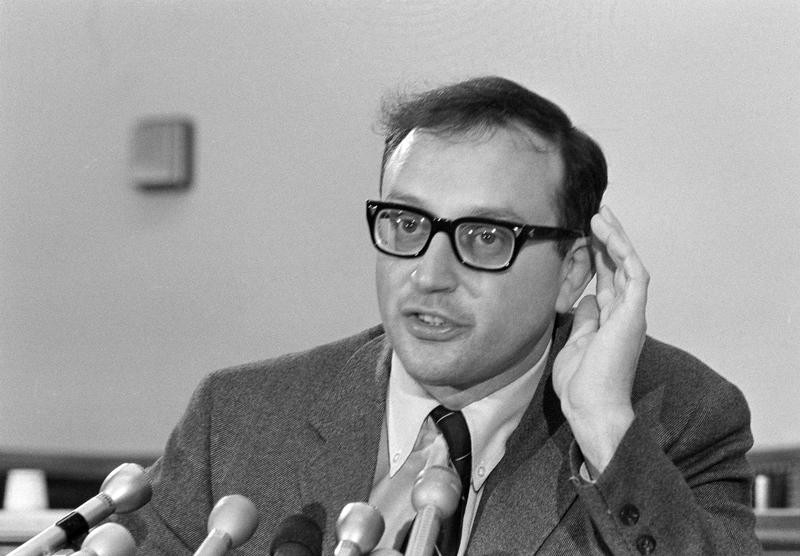
The name Allard Lowenstein (1929-1980) may not mean too much to political activists today, but in the 1960s and 1970s he was a well-known liberal figure associated with many of the progressive causes of the day.
For this reason, it would come as something of a shock to many of his contemporaries to discover that he appears to have been an asset of the CIA.
Despite his fervent opposition to the Vietnam War, Lowenstein was strongly anticommunist. His political mentors included Eleanor Roosevelt (1884-1962),[1] with whom he remained very close, Frank Porter Graham (1886-1972) and Norman Thomas (1884-1968) who all defined themselves during the Cold War as part of the anti-communist left.[2]
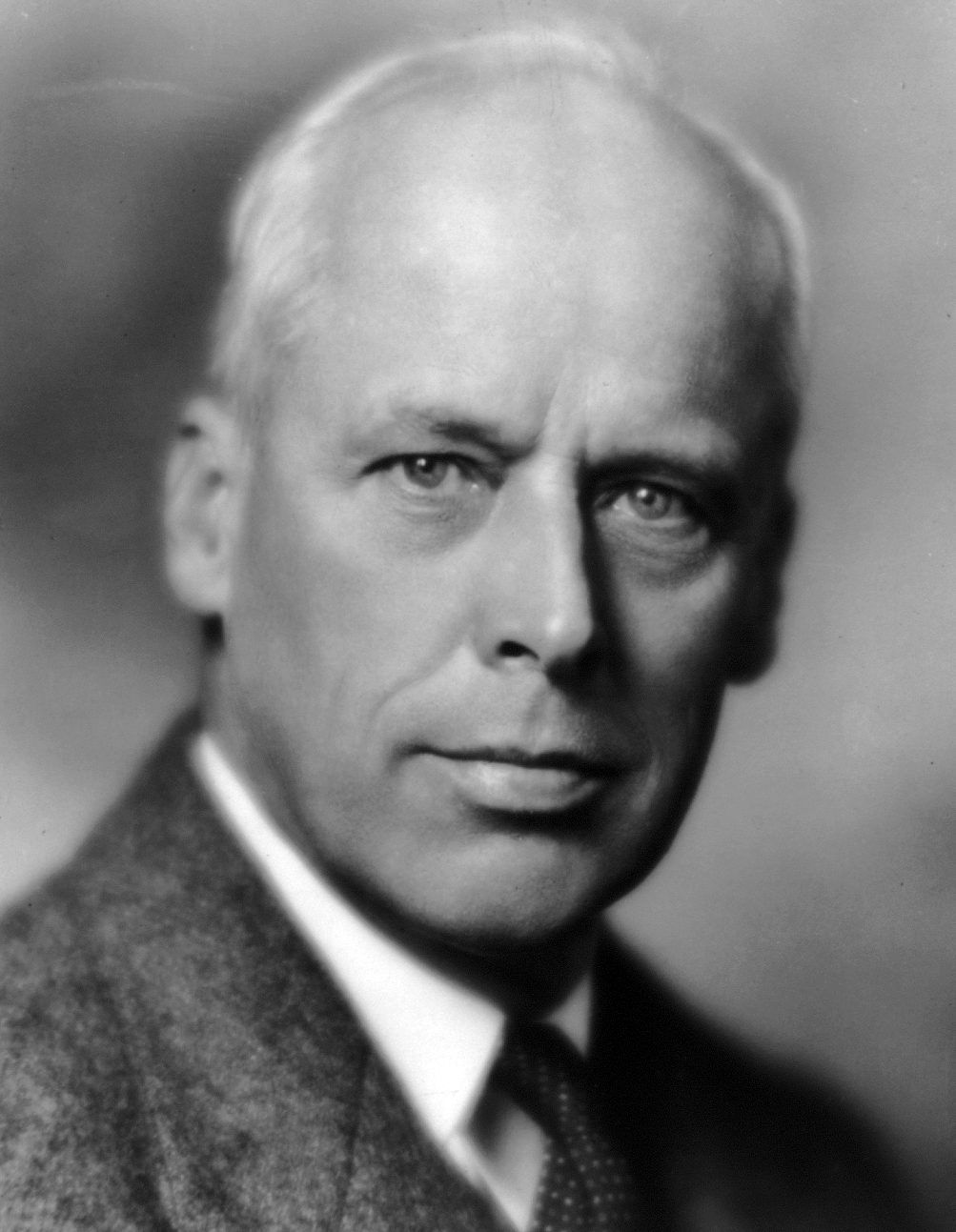
Norman Thomas [Source: wikipedia.org] 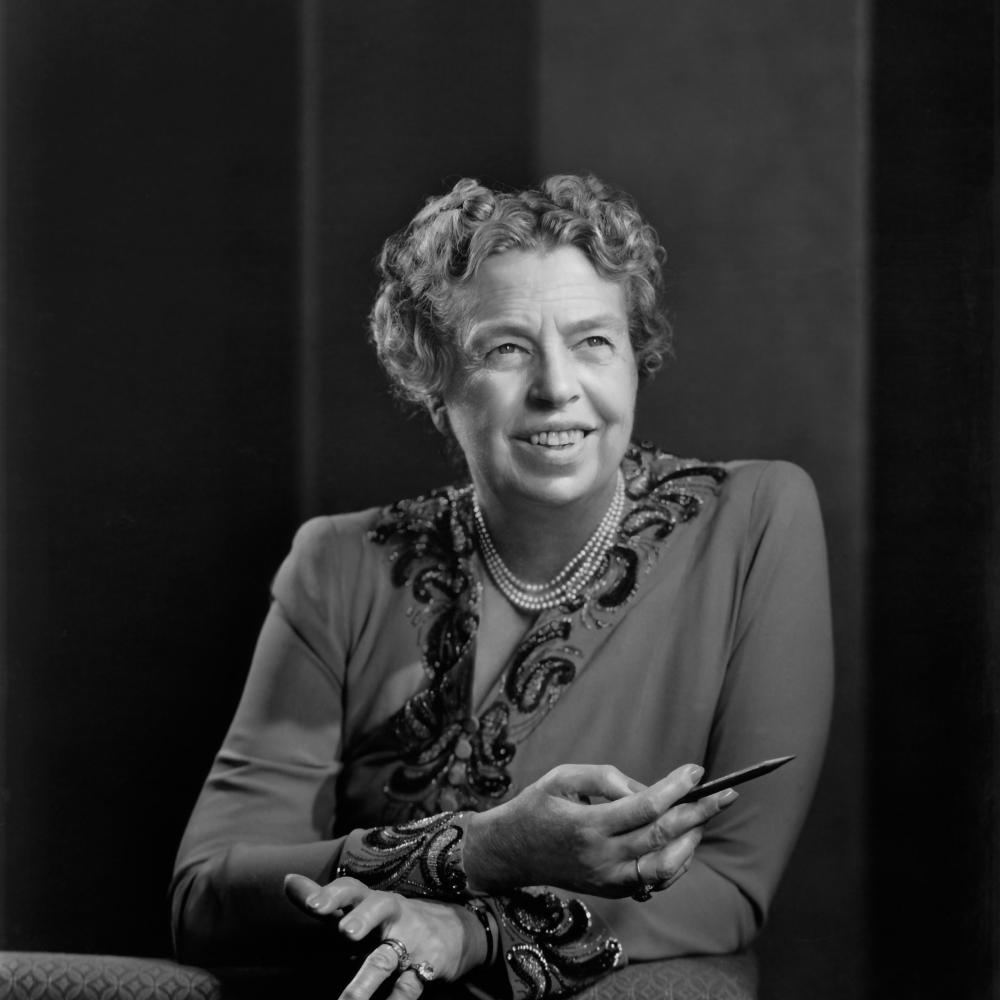
Eleanor Roosevelt [Source: neh.gov] 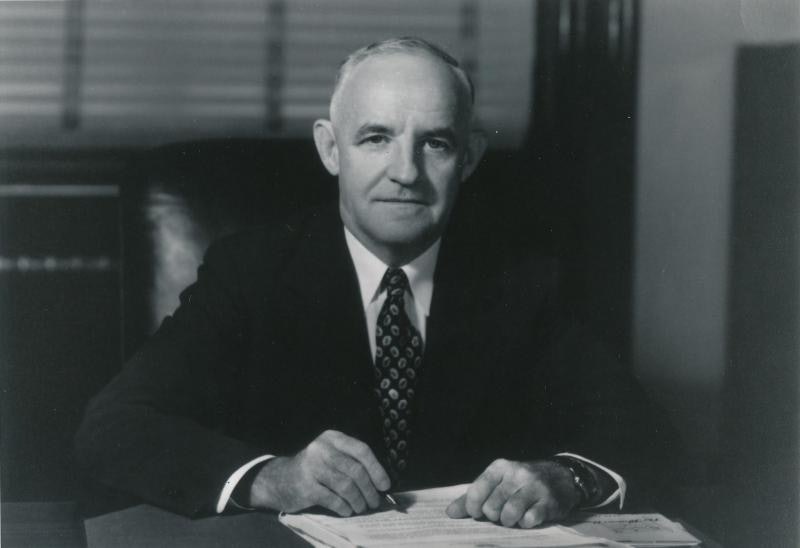
Frank Porter Graham [Source: 890.myt.li]
Five of the most dynamic episodes in Lowenstein’s life reveal diverse political activities which can be sorted under the following headings: 1) Lowenstein’s presidency in the National Student Association; 2) his role in smuggling Hans Beukes out of South West Africa; 3) his work with and political betrayal of the Freedom Riders in Mississippi; 4) his “Dump Johnson“ movement of 1968; and 5) his television appearances and ongoing bromance with conservative talk show host William F. Buckley.
Did Lowenstein simply stumble with Forrest Gump-like serendipity into one of these hot situations after another? Or were allegations and rumors of his secret ties to the CIA true and his peripatetic antics part of larger strategies steered by some sort of domestic espionage?
In 1985 (as soon as five years after Lowenstein’s bizarre assassination[3]), Hendrik Hertzberg[4] of The New York Review of Books called out Lowenstein biographer Richard Cummings[5] for his then-shocking accusations that linked Lowenstein to the CIA.
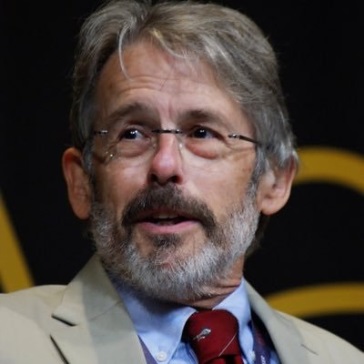
While eviscerating Cummings and Cummings’s publisher, Grove Press, this critic (and former speechwriter for Jimmy Carter) often referenced a telephone-book-sized volume prepared by three lawyers[6] purporting to list inaccuracies in Cummings’s research.
Rebuttals by Cummings, Barney Rosset[7] of Grove Press, and others were also eventually published along with a final word from Hertzberg. It was a big fuss over a biography that otherwise appeared to be a dispassionate and accurate piece of research.
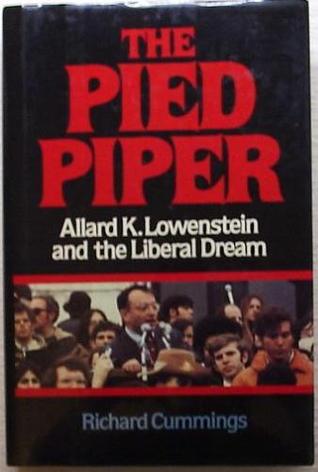
The caustic exchange says much about a damaged and divided nation secretly steered by its own civilian spy agency. Kicking dust into the air always helps defend the secret intelligence network, while individual players such as Lowenstein either fade into the background or become collateral damage.
As in the Watergate scandal, politicians are all but expendable, to be thrown upon a trash heap, but the intelligence network itself remains the ultimate sacred cow, not to be exposed to the public long enough to allow people to suspect it is really creating an ultimate narrative; beguiling people into believing what should make them happy or angry; or at least telling them what are the compelling issues on the horizon.
Even if the dust has now settled, a clearer view of Lowenstein and any strings attached to him requires more than ad hominem attacks aimed to pin down or unpin him as an “agent,” “witting player,” or something even harder to define. If Lowenstein manipulated America’s political landscape, discerning the genuineness of his right to do so from the improper trickery of a government entity (rogue or otherwise) should make us all a little smarter the next time we mark our ballots.
Lowenstein’s Presidency of the NSA
Emerging in 1947 and lasting until 1978, the National Student Association (NSA) espoused mostly post-World War I internationalism, which by the end of World War II had become also a cause championed by the communism of that era. Before that, the Intercollegiate Socialist Society founded in 1904 was an early attempt to assimilate the mild socialism of Eugene Debs into American colleges and a model for such student organizations to come.
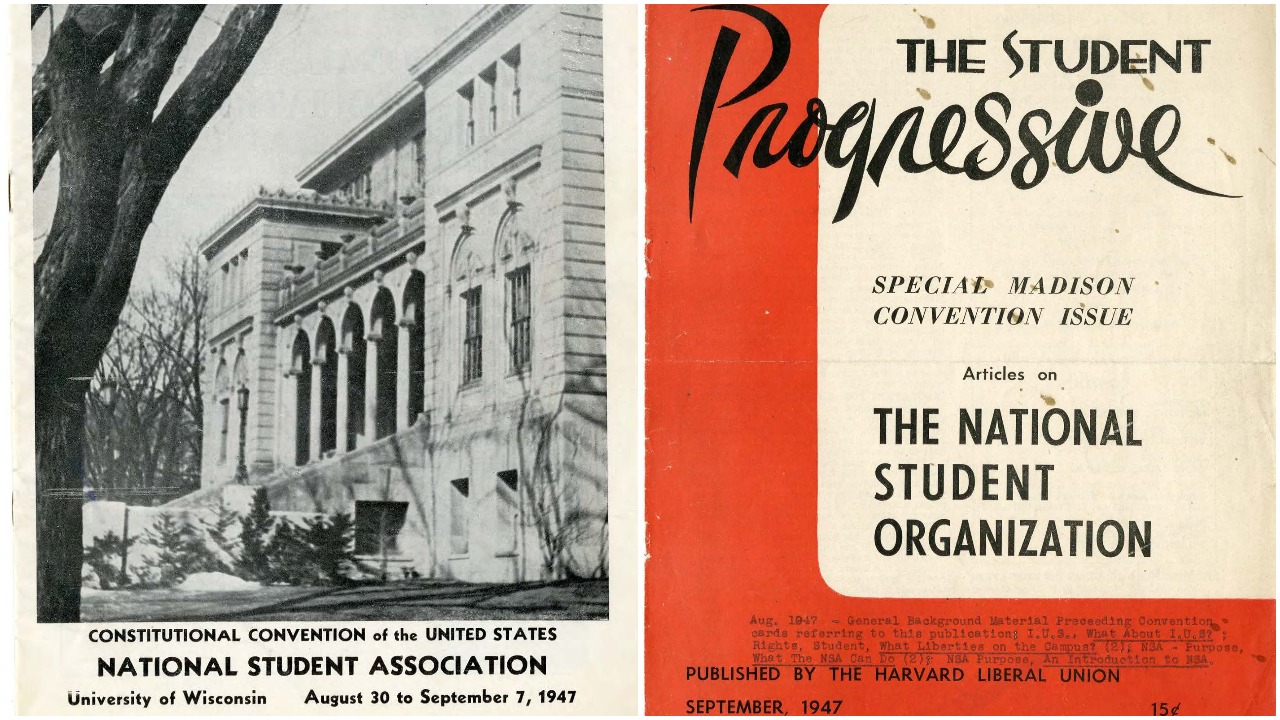
In a recent book about 1960s spy Philip Agee,[8] author Jonathan Stevenson mentions Agee’s fixation on how the CIA may have infiltrated the International Confederation of Free Trade Unions with the help of the AFL-CIO.
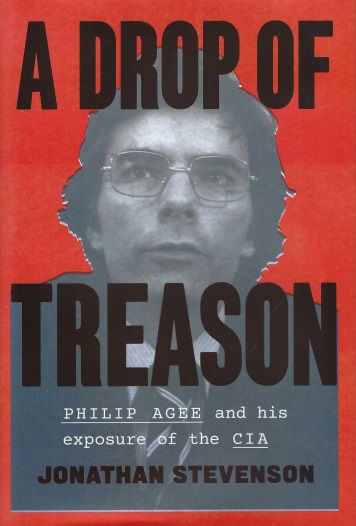
Purging international labor unions of communism was a similar mission to purging international student organizations of communism.[9]
Not that terminology should become the crux of the issue at hand, but past attempts to assess exactly what Lowenstein knew about the workings of the CIA and its secret money have been little else than battles over words. Since purging leftist organizations of communists became an ongoing mission in Lowenstein’s life, especially later when he worked with the Mississippi Freedom Riders, it should be at least suspected that Lowenstein was part of this network of influence which allowed the NSA, like the AFL-CIO, to be infiltrated by the CIA.
Actually, it’s difficult to fathom that anyone involved in the NSA could not be suspicious of its CIA-based machinations once the Cold War was definitely on. Whether based in the United States or the Soviet Union, international student organizations of that era did little else but unctuously display what were supposed to be naïve participants.
In reality, these bright and ambitious youngsters ought to have realized their role to the rest of the world as young Cold Warriors, even if some of them did naturally and truthfully form their opinions without coaching from mentors with ulterior political motives. Anyone who saw these international student organizations without political motivations simply did not see anything at all but the thin veneer of bad, if not overtly corny propaganda.
A famous set of articles by Ramparts[10] magazine commencing in March 1967 revealed a flow of money from the CIA to the NSA. Much has been written since this explosive revelation about the relationship and a host of other secret flows of money to organizations domestic and international.[11] It has by now been plausibly suggested that secret CIA money was flowing into NSA as early as the end of the 1940s.[12] Cummings even claims the CIA formed the NSA.[13]

Lowenstein, who served as president of the NSA in 1950, admitted only to suspecting such money.[14] The Ramparts articles named other officers as managers of such CIA funds, giving Lowenstein a convenient but slippery alibi and basis for denial that he was ever truly agreeing to any conditions attached to the money.[15]
This becomes a heated topic for Hertzberg, who participated in the NSA during the mid-1960s and swears to his readers that he had no knowledge of being part of any secret CIA mission, using this alleged ignorance as proof that it was possible Lowenstein also didn’t know. He does on the other hand acknowledge some members were “witting” or “witty” of CIA involvement, even if they did not directly handle the money or promise any favors. In any case, Hertzberg’s own involvement in NSA should have disqualified him from publishing a reliable review of Cummings’s book and commenting on Lowenstein’s knowledge of CIA money.
Like Hertzberg, Karen M. Paget[16] acknowledges those in the NSA who may not have been formally declared assets of the CIA, but were still “witting” or “witty” because they knew secrets. To further bargain with secrets makes them another kind of player. Others are witting but not players because the law may compel them to secrecy, because they signed secrecy oaths written and worded carefully by the CIA. To break the oath could mean a fine and even imprisonment.[17]
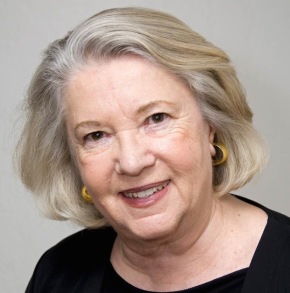
Karen M. Paget [Source: lareviewofbook.org] 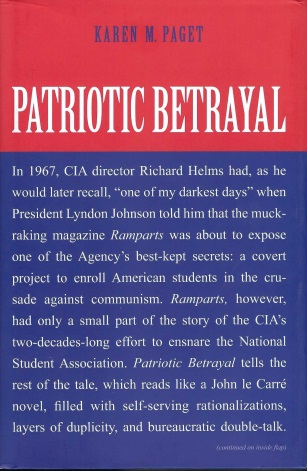
Nevertheless, Hertzberg bases attacks on Cummings’s research on the word “agent,” without defining it for himself or explicitly showing how Cummings might have used the word.
Cummings, in turn, insists (wrongly) that freelancers for the CIA would never have been trusted with covert tasks to perform. On this specific matter, Hertzberg and Cummings cancel each other out, each trying to make their own point by affirming the other’s main point about CIA domestic spying and influence.
The truth is that the CIA was a tricky organization during the Cold War that gained influence anyway it could and often did so in secret ways that could not be easily traced. Agee’s word “asset” remains general enough to describe the operatives in the deceitful CIA network without requiring them to be formally on the CIA payroll or a regular freelancer referred to in CIA documents only by a secret cryptograph or alias.
Two months after the Ramparts articles, Tom Braden (1917-2009) announced publicly that, when he was an aide to CIA Director Allen Dulles, he had created the program to secretly subsidize labor unions and student groups. Between 1950 and 1954, money was known to flow to not only NSA and both the AFL and CIO before they merged, but also the United Auto Workers headed by Walter Reuther.[18]
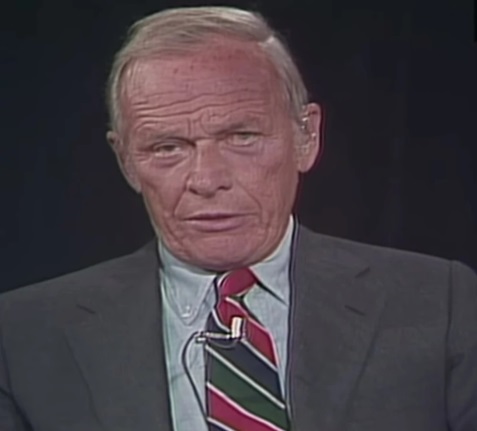
Tom Braden (1917-2009) [Source: historica.fandom.com] 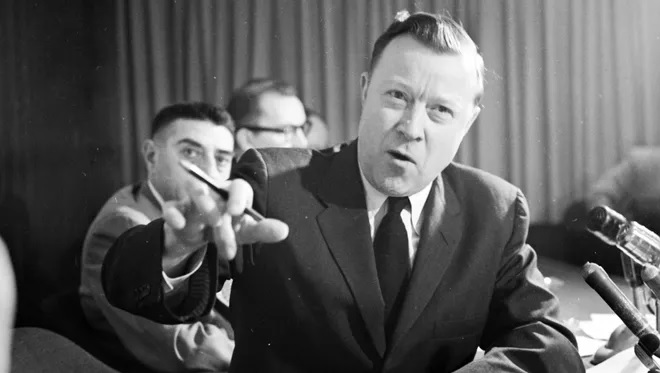
Walter Reuther (1907-1970) [Source: wnyc.org]
An early attempt to understand the network of CIA influence appeared on television in 1967 as a special report, In the Pay of the CIA, with host Mike Wallace.[19] One of the people interviewed for this was one of Lowenstein’s all-time heroes and mentors, socialist Norman Thomas.
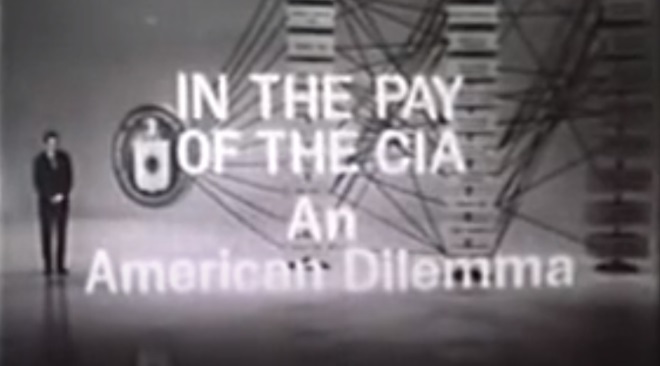
Of course, once voluntarily outed, CIA case workers like Agee or Braden don’t change their minds and later try to deny their affiliation to the Agency, even though Braden went on to have a television career in which his career at the CIA seemed all but forgotten.
The crucial point is that many witting players not bound to a secrecy oath can also exchange favors for the CIA, but must learn how to keep that exchange secret by denying it or simply pretending they didn’t know about the money. In turn, as the CIA thus extends its influence, any tortious acts or improper violation of rights of such informal agents should make the CIA liable under the legal concept “color of government.”[20]
Nonetheless, Paget continues to imply that, although Lowenstein’s motives as president of the NSA remain unknowable, he appeared to be running contrary to CIA policy.[21] In a caustic speech he delivered in Stockholm while president of the NSA, Lowenstein vitriolically attacked the Soviet Union so that Third World listeners became highly suspicious of the United States and driven to unite into their own political faction–something the CIA wanted to avoid.[22]
Still, Paget’s observations should not directly assume that Lowenstein’s role as a fly in the ointment of the CIA’s apparent policy made him a clear opponent to the CIA. Whatever machinations were afoot between the CIA and young Lowenstein—that would help launch his career and reputation as an anti-communist liberal—could have been part of a larger strategy. In fact, Lowenstein even could have used his reputation as CIA spoiler and loose cannon as a bargaining chip, promising to tone down the rhetoric if the CIA would do something for him.
The loaded word “influence” makes the reach of the CIA almost infinite in terms of which individual or organization can truly be private. Conspiracy theorists are often criticized for imagining a conspiracy that must have thousands of people in it, but by innuendo alone, certain false narratives can be maintained by getting people to fear that challenging them would make them strange or unusual members of a community, if not banished from the community altogether for being weird.
Many things should be considered in terms of favors the CIA could bestow upon Lowenstein, including his pending acceptance into Yale Law School, his employment at the United Nations, his pending book deal with publishing giant Macmillan, or, eventually, academic posts at elite universities such as Stanford.
In fact, Lowenstein’s grades as an undergraduate at the University of North Carolina at Chapel Hill were not exemplary, as at least one of his biographers, William H. Chafe, has emphasized.[23] Not only was Lowenstein already running with an elite crowd during his tenure at NSA, but he was known to be especially aloof during his first year at Yale Law School and did not attend many classes.[24]
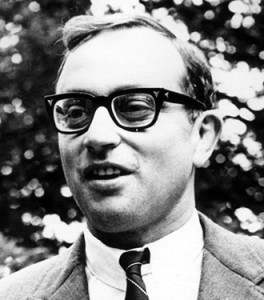
We are finally left with an incomplete version of history that some biographers prefer to hinge on Lowenstein’s half-denial of suspecting an influx of CIA money into the NSA, but not actually knowing about it. The real links between Lowenstein and the CIA most likely lay in his allowing the CIA to secretly handle him and even his spying on communist-leaning students.
Nevertheless, the hardest part of this is disbelieving the lying public personas admired for ideals they stand for. In his interview with Mike Wallace, Norman Thomas gives the impression that his perception of a situation guided by secret CIA money was opposite to what was really happening.[25] The same Norman Thomas is described in Hugh Wilford’s book, The Mighty Wurlitzer,[26] as abruptly saying “phone Allen” (meaning Allen Dulles) whenever emergency money for his organization was required.[27]
Wilford also states that Thomas and Dulles owned neighboring vacation homes on Long Island.[28] Either Wilford’s information is sorely exaggerated or Thomas must have been willfully playing ignorant about his relationship with Dulles in this television interview. It at least appears to be the same pattern of play-acting to deny connections to the CIA that so many anti-communist liberals of this time were engaging in, including and especially Lowenstein.
Lowenstein’s Role in Smuggling Hans Beukes Out of South West Africa
As much as young Lowenstein established himself stridently anticommunist in the Stockholm speech, he would continue attending and speaking at NSA gatherings without any stigma of being a loose cannon. He had also spent most of the 1950s busy with other compelling tasks, such as finishing Yale Law School; traveling to the Soviet Union with Eleanor Roosevelt; working in Spain to spread anti-communism to students; visiting Israel; and, finally, preparing himself for future activities during his first trip to South Africa. Also crucial at this time was his work (perhaps only voluntary) for then-Senator Hubert Humphrey.[29]
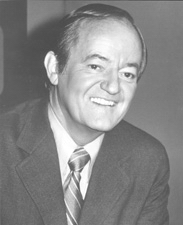
By 1959 when Lowenstein’s second trip to South Africa materialized, the CIA had already been deep into some of its most notorious secret activities, although not yet engaged with the formidable problem of Fidel Castro. According to Cummings although adamantly denied by Hertzberg, the CIA at this time covertly recruited Lowenstein as a scrappy CIA field agent.
If we are to trust Cummings’s sources, Lowenstein would vastly advance his position with the CIA and earn points with them by returning to one of the liveliest political hotbeds in the world. His mission would be to smuggle a young African student and activist named Hans Beukes out of the harsh apartheid system in South West Africa, today known as Namibia, which at the time was an area still administered by the harshly racist government of South Africa.
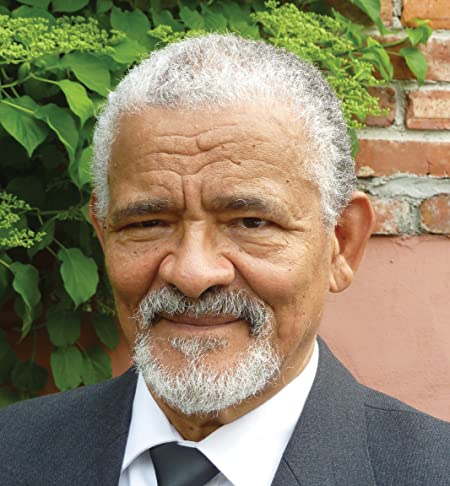
The saga of Hans Beukes having his passport confiscated because of his extreme political views which prevented him his higher education studies in Oslo, Norway, became a media sensation in the South African press by the time Lowenstein arrived there.[30] The adventure of smuggling him out of the country became a picaresque adventure as told in Lowenstein’s only book, Brutal Mandate.[31]
While Hertzberg vehemently criticizes Cummings for linking Lowenstein to the CIA, his rant goes beyond accusing Cummings of sloppy research or fudging the facts to fit a false theory and claims Cummings attempted to destroy Lowenstein’s character. This exposes a problem with Hertzberg’s criticism in that nothing about this mission, if it was indeed a CIA mission, ought to offend the humanitarian instincts of anyone, other than engaging in a little trickery with the local South African officials as well as some dishonesty surrounding the publication of Lowenstein’s book.
In other words, it was anything but a tale of assassination, secret testing of potent drugs, coup d’état, or anything else salacious we now know the CIA was engaged in to fight a dirty Cold War with communism. It also has little to do with trickery aimed at American citizens, let alone young, impressionable college students.
Part travel book and part liberal journalism, Brutal Mandate can also be read as an early attempt by Lowenstein to create his own public relations. He made himself out to be a passionate activist who would risk life and limb to do a favor for another worthy human being. He also established himself as warrior against racism, since Beukes was an African student trapped under apartheid. Eleanor Roosevelt contributes a Foreword to Brutal Mandate, as if endorsing all the intricacies and spins of Lowenstein’s story, but nothing reveals she had any idea what he might have really been up to.
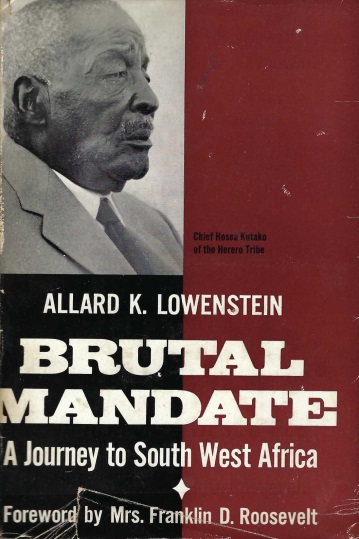
The obvious non-CIA agenda at this point between Lowenstein, Roosevelt and Beukes would be the effort by the United Nations to decolonize Africa and organize it into functioning, independent nations. Beukes may have been a minor figure in all this, but his potential value as PR both inside and outside Africa gave him enough status for a reader of Brutal Mandate to suspect he was more than simply a desperate student who was lucky enough to accidentally run into Lowenstein.
As fickle as the elite publishing world can notoriously be, Lowenstein’s pitch to publish his book may have stood on its own merits, but there is plenty of room to suspect Brutal Mandate was published with some push from others in higher places, if not also the United Nations or the CIA, let alone Roosevelt herself. The narrative further introduces a much sketchier character to explain how Lowenstein’s mission materialized: Guthrie Michael Scott (1907-1983).
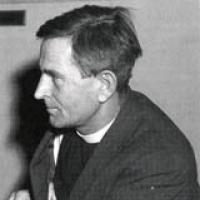
Key to understanding Lowenstein’s mission, this Anglican priest and former communist[32] set Lowenstein and his two colleagues up with an ostensibly humanitarian fact-finding mission in South West Africa. The initial meeting between Lowenstein and Scott took place in New York City at the behest of Lowenstein’s lifelong mentor, Frank Porter Graham.[33]
Scott kept a high profile as an activist in Africa with the help of an organization called the African Bureau, which was founded and funded by wealthy English newspaper publisher David Astor (1912-2001) of the famous Astor Family.[34]
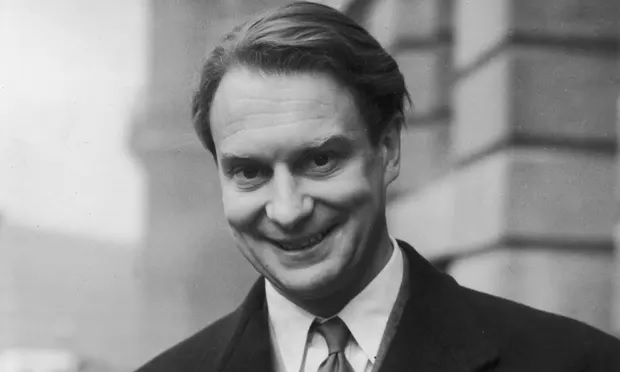
David Astor (1912-2001) [Source: theguardian.com] 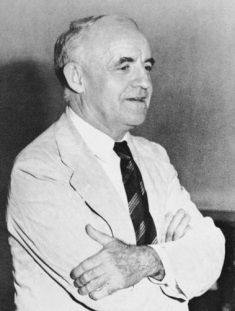
Frank Porter Graham (1886-1972) [Source: findagrave.com]
What now might be suspected as a cover story, Lowenstein’s claim that Beukes approached him out of the blue in Africa and together they improvised the smuggling operation does make Lowenstein sound like an extremely generous activist, but also rather impetuous. One of Lowenstein’s cohorts, Emory Bundy, points out that their operation to smuggle Beukes out of South West Africa was anything but a well-oiled plan.[35]
As described in Brutal Mandate, it involved a rickety Volkswagen Beetle, getting in and out of segregated hotels without stirring up local suspicion, and hiding Beukes in the back of the car under a bunch of dirty laundry.[36]

Nonetheless, with the power of the African Bureau and Astor Family money behind the enterprise and whatever manipulation this powerful force had on the local South African press, the operation may not have been nearly as dangerous or adventuresome as Lowenstein’s narrative tries to make it out to be. The CIA may not have supplied Lowenstein with any sort of special equipment or instructions, but the purpose of the mission was probably little beyond to promote Western anti-communism with a suspenseful story.
Otherwise, the CIA was known to secretly pay for ventures such as Lowenstein’s field work in large amounts of cash,[37] especially when they were in foreign countries. Other mostly untraceable payments could be made through dummy organizations to other organizations that would pay sums of money into organizations Lowenstein might be interested in, if not organizations Lowenstein’s family members might be interested in. Those researchers hunting for telltale paystubs and other chits among Lowenstein’s archive of papers and coming up empty-handed should not therefore rule out it was a CIA mission.
On the other hand, Chafe assumes that the money for Lowenstein to travel to Africa came in the form of personal loans from within his family.[38] Likewise, Chafe assumes that, even though this was no leisurely vacation, Lowenstein’s venture to this obscure and remote part of the world was the result of some whim. If the Beukes adventure had not been the primary purpose for the trip, it might have been what it purported to be, or a fact-finding mission for Guthrie Michael Scott, but also secretly for Senator Humphrey.
On the surface, if Humphrey’s organization was supporting Lowenstein’s fact-finding, it should have transparently picked up the tab. At least it does not appear to have been a whimsical vacation, more a mission with secrets that Lowenstein’s family should not have been privy to.
It was part of the Dulles legacy that the CIA’s mission in the southern half of Africa involved outmaneuvering the Soviet Union for influence on the indigenous people but also to help modernize the existing democracies to phase out the brutal and racist apartheid systems in what were technically Western democracies. Lots of students such as Beukes were eager to travel abroad and speak out against the evils of their countries.
If the mission had the appearance of an improvised, spur-of-the-moment rescue by three Good Samaritans, so be it. The truth is more likely that no one was ever in much danger of getting captured or found out, which is why a civilian activist would have been suitable to carry out such a mission. Chalk up this particular episode as more an adventure in public relations than the black operation of a CIA field agent, even if still highly suspicious in terms of its timing and repercussions.
Lowenstein and the Mississippi Freedom Riders
After Lowenstein’s African adventures and publishing what would become his only book,[39] he managed to return to a fairly stable position in academia at Stanford University in California as a part-time lecturer and on the staff of the dean of students.[40] This allowed him to recruit and nurture the politics of bright young students from one of America’s most elite universities.
This would be a godsend, if Lowenstein himself were now part of a nationwide intelligence operation or psy-op designed to recruit the best young leaders in America and indoctrinate them against communism. Certainly many of those bright young minds eventually began to suspect that Lowenstein’s volunteerism was actually some sort of CIA covert mission, although Lowenstein always denied it.[41]
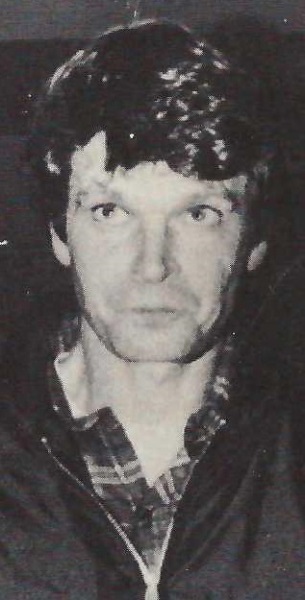
As things would develop, even the noble goals of the Civil Rights movement as played out among the Mississippi Freedom Riders took a lesser priority to Lowenstein’s prevailing vision of anticommunist liberalism. Those same suspicious young recruits who followed Lowenstein to Mississippi, like Dennis Sweeney (who later became Lowenstein’s assassin), only to be abandoned and betrayed when Lowenstein quit the Mississippi scene because he thought others in the organizations there were communists, were caught in crossfire they did not fully understand, mostly because they thought they were fighting for Civil Rights, not against communism.
The Civil Rights Movement after World War II may have actually been facilitated by the Truman Doctrine which created the Cold War. President Truman might not have naturally had the resolve to vigorously rectify racism in America, which the Soviets would no doubt exploit in their propaganda. Probably with the help of a counterintelligence program in the newly formed CIA designed to sniff out and neutralize such propaganda, the Civil Rights Movement would end up on a faster track.
Truman’s lack of compunction when frequently bragging “I always liked Joe Stalin,”[42] helped by America’s original anti-Fascism policy that the Soviets shared, must have spurred Winston Churchill’s original strategy at Potsdam to divide the two allies sitting across the table from him.
Churchill’s chillier stance with the Soviets no doubt also fueled his 1946 speech in Fulton, Missouri (with President Truman attending in his home state), acting as a first salvo fired in the Cold War. Resonating prominently in the milestone speech lurked Minister Goebbels’s articulation “Iron Curtain,”[43] even though much of history now erroneously attributes its origin to the English language, not German.
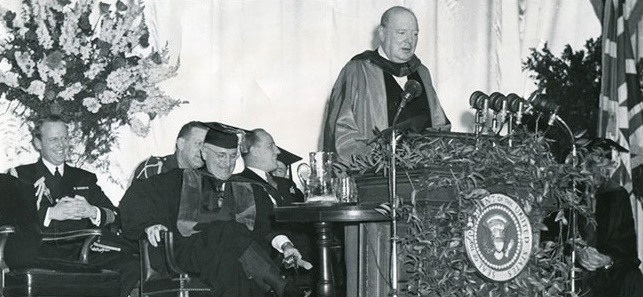
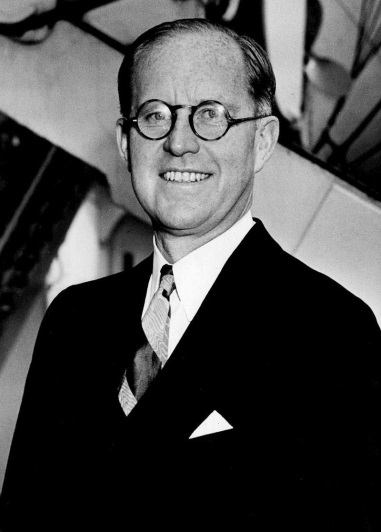

President Roosevelt’s insistence on unconditional surrender with Germany[44] may not have completely jibed with Great Britain’s Conservative Party, which throughout the war was headed by Churchill, but before that, Neville Chamberlain.[45] Teaming with the Nazis and Americans to overtake the Soviet Union might have been what British conservatives preferred, in light of the many Nazi sympathizers in their ranks (as reflected in statements supporting the views of Nazi sympathizers by American Ambassador to Great Britain Joseph Kennedy).
In any case, it has not been an easy lesson among America’s Cold Warriors that Roosevelt’s New Deal and Keynesian economics once stood front and center on the world stage of promising trends toward prosperity, while the wealthier among America’s citizenry saw it as a threat and even associated it with all that was wrong with communism. Although Lowenstein always claimed his anti-communism stemmed from his childhood while following the events of the Spanish Civil War, the active anti-communist network during the Cold War began sounding more like Daddy Warbucks than the New Deal.
An organization that especially bonded the anti-communist liberals together after World War II was Americans for Democratic Action (ADA), with Arthur Schlesinger, Jr., from the Office of Strategic Services (OSS) playing a crucial role.
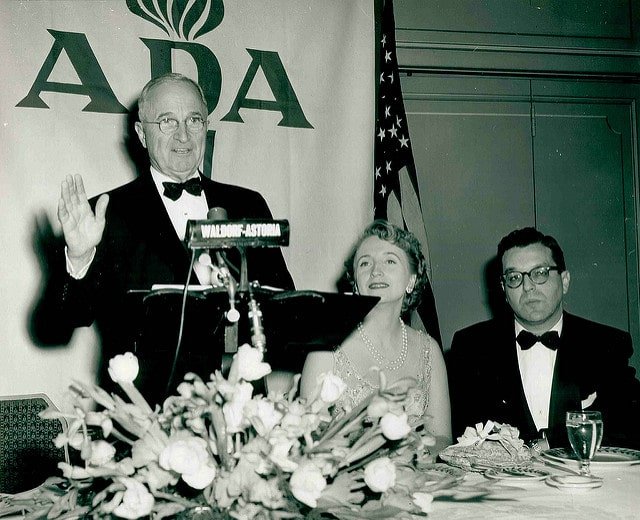
Eleanor Roosevelt often embarrassed her husband for having politics to the left of his but, after his death, her move to the center of politics by joining ranks with the ADA made her one of the most powerful Democrats in the country, but clearly a centrist compared to her former self.
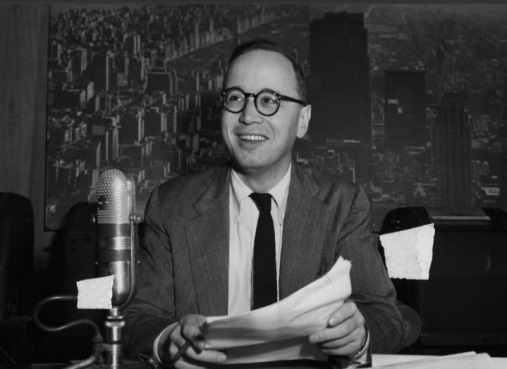
Arthur Schlesinger, Jr. (1917-2007) [Source: wnyc.org] 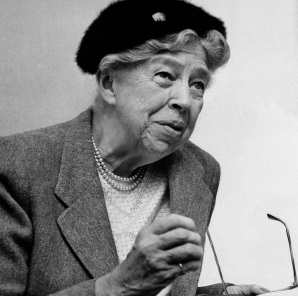
Eleanor Roosevelt (1884-1962) [Source: nbcnews.com]
The ADA also helped form a powerful politician out of the mayor of Milwaukee, Hubert Humphrey, who was the only founding member who did not hold some national office or have national stature. A few decades later, Humphrey almost became President.
Lowenstein chaired the ADA in the early 1970s but, because of his lifelong relationships with members Eleanor Roosevelt and Frank Porter Graham,[46] his position in ADA was always firm from its inception. This was in spite of the isolationist stance before World War II of his other mentor, Norman Thomas, who was what the ADA originally tried to steer away from.[47]
Others in the ADA that circuitously link Lowenstein to other anti-communist Democrats that appear in the network of CIA money include Walther Reuther and lawyer Joseph Rauh Jr. In 1948, the ADA attempted to unseat Truman by suggesting Eisenhower should run as a Democrat, which of course never materialized.
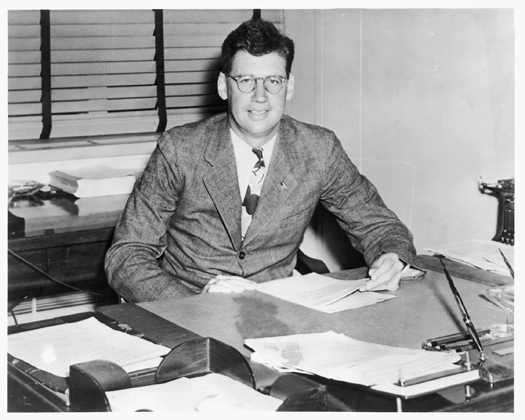
Joseph Rauh Jr. [Source: press.umich.edu] 
Walter Reuther [Source: Britannica.com]
Just the same, Eisenhower as a Republican facilitated the unanimous decision in Brown v. Board of Education and ordered the troops to Little Rock, Arkansas, that enforced it. Even J. Edgar Hoover became a crusader against the Ku Klux Klan at this time.
In this context, the work of the Freedom Riders has become an American legend, but not usually associated with anti-communism. Lowenstein and his select Stanford protégés travelled to Mississippi and joined up with groups that had already been formed[48] to help the oppressed African-American population register to vote.
To the students risking life and limb in this movement, as to most anti-racist Americans who read the headlines as they happened, the Freedom Riders represented a new hope to African-Americans and their country. For the sake of appearances, the Freedom Riders also became a Cold War-era anticipation of valid criticism from communists, which would now be hopefully not as effective.
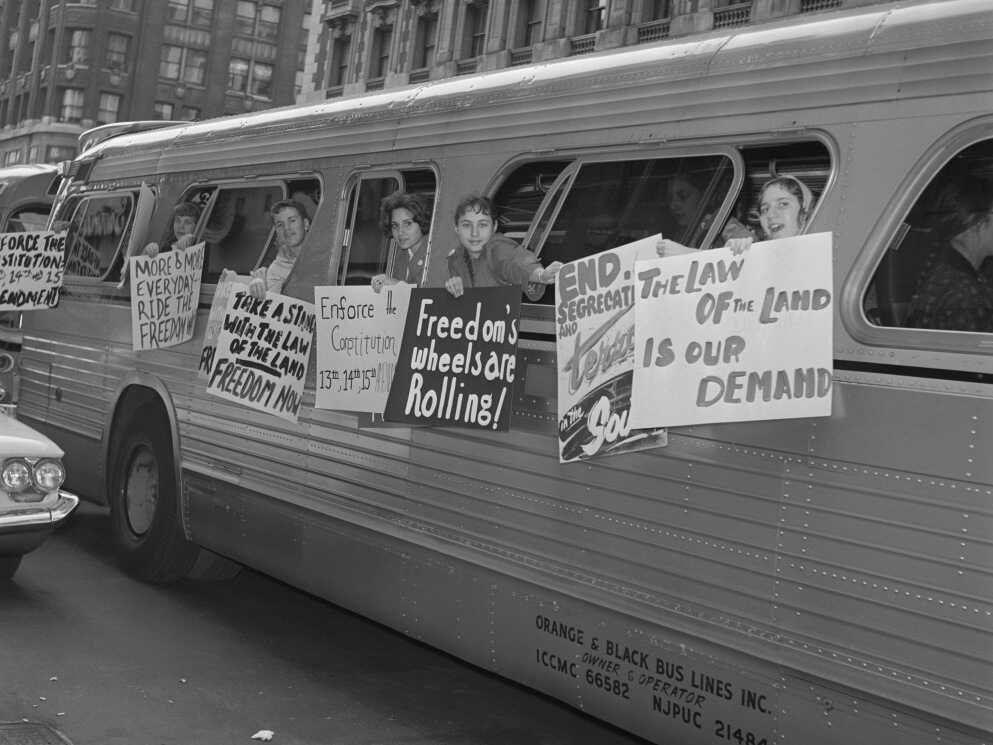
On the other hand, Lowenstein’s priority remained anti-communism, to the point where he aggressively attacked another organization engaged with the cause in Mississippi, the National Lawyers Guild (NLG), with which J. Edgar Hoover also had an ongoing beef as alleged communist subversives,.
Lowenstein was so passionate about NLG that he quit the Freedom Riders. For the Freedom Riders who had risked much during the struggle, Lowenstein appeared to betray not only them but the cause for which they were fighting.
This point of contention became severe during the 1964 Democratic Convention in Atlantic City, when the remnants of the Freedom Riders, including Sweeney, fought to include representation on the floor of an African-American group,[49] and Lowenstein would oppose it. Lowenstein’s savvy swivel from one camp of the Democratic Party into another disillusioned many colleagues, but others probably could foresee that he was just getting started with his political legerdemain and four years later, his machinations would even unseat a sitting president of his own party.

Lowenstein’s “Dump Johnson” Movement of 1968
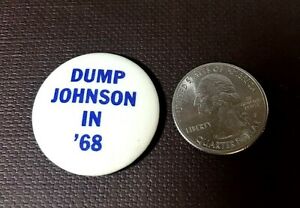
Make no mistake about it, the Eugene McCarthy campaign for President in 1968 was one of the most progressive events of its time. Notoriously associated with peace symbols both manual and written down, the slogan “McCarthy for President” stood as one of the most iconic anti-Vietnam War statements of the era and a rallying cry for the youth of America who were facing the legal violence that would compel them into deadly combat duty.
Whether wearing preppy attire or long hair and sandals, few suspected at the time, either through McCarthy’s sometimes opaquely indecipherable rhetoric or bright smile, that these anti-Vietnam War sentiments did not entirely originate with him. In retrospect, few recognize how confused McCarthy probably was about his own campaign, his popularity, and the sentiments he was stirring up.
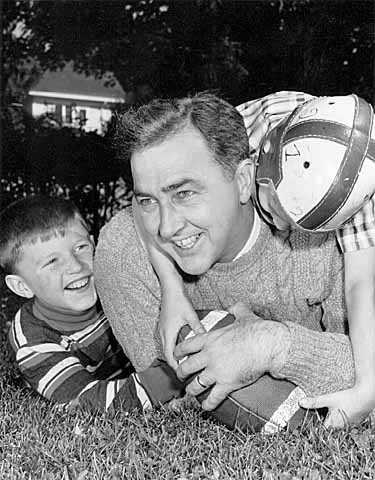
While politicians may wisely allow (without necessarily encouraging) independently developed benign buzz within their campaigns, an unwritten rule warns a candidate against direct participation in such spontaneity since it obviously tends to have a mind and spirit of its own. As a result, followers often waited for McCarthy’s stinging, verbal karate chops when engaging in anti-war rhetoric, only to get mostly examples of his laboriously thick thought process and wordy fiscal or strategic analyses of the war.
As for who was ultimately feeding the McCarthy campaign its anti-Vietnam War posture, credit should go to none other than Lowenstein and his cohort at the time, Curtis Gans.[50] Ultimately dubbed the “Dump Johnson” movement, the campaign reveals itself possibly more about unseating a sitting President than stopping an unpopular war.
In other words, Lowenstein successfully manipulated politics with such skill that he instigated his own version of a coup. McCarthy’s campaign was a means to an end, and as such, it was shockingly successful.
If this analysis appears to be distorted and cynical as to where Lowenstein’s priorities actually lay, consider the 1972 presidential election, in which he chose to launch a “Dump Nixon” campaign with Republican Pete McCloskey, since McCloskey also had been against the Vietnam War. Still, the anemic McCloskey campaign failed to ruffle the feathers of Nixon who sailed to a landslide victory over outspoken anti-Vietnam War candidate, George McGovern.
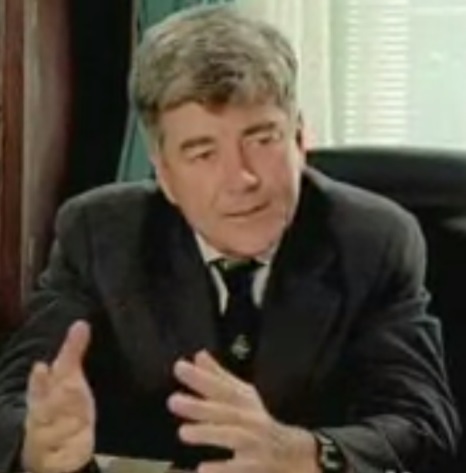
Pete McCloskey [Source: openvault.wgbh.org] 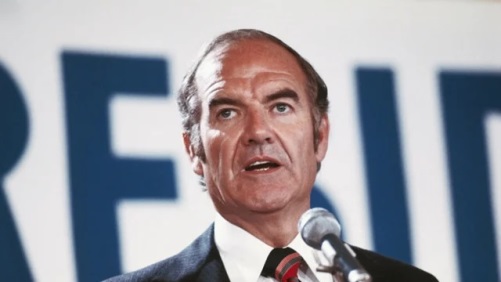
George McGovern (1922-2012) [Source: thehill.com]
In 1968, what it all boiled down to in terms of an anti-Vietnam War candidate when the Democratic Convention took place in Chicago might as well have been a second Johnson term, when Hubert Humphrey (Lowenstein’s former employer) took center stage as the party’s nominee. McCarthy’s unsuccessful first foray into presidential politics would not be his final attempt. His 1976 campaign as an independent candidate found him espousing his own version of the then nascent Libertarian philosophy in a post-Vietnam War era, while the deft press somehow depicted him with a pronounced scowl rather than the bright smile of his 1968 campaign.[51]
Also straining the 1968 McCarthy campaign was the notion that he was not Lowenstein’s first choice for the Dump Johnson movement. Lowenstein first approached Robert Kennedy for the candidacy and was turned down. George McGovern was also approached and rejected the idea. While McCarthy’s campaign eventually served its purpose of pushing Johnson out as a sitting President, it also inspired Kennedy to get into the race and challenge McCarthy as the most passionate and youthful anti-Vietnam War candidate.
The night Kennedy was assassinated, he had telephoned Lowenstein, asking him to quit McCarthy and join his campaign. Lowenstein, who is said to have written Kennedy’s famous “Ripple of Hope” speech,[52] would ultimately place Kennedy among his sacred pantheon of heroes.
By coincidence, the Tet Offensive gave the anti-Vietnam War candidates of 1968 their biggest boost. Johnson’s cold feet in taking on the anti-war “doves” (as opposed to his “hawk” position) failed to foresee their ultimate defeat to Nixon, especially McGovern’s four years later in 1972.
Nonetheless, Lowenstein emerged the victor among Democrats for setting out to dump Johnson and succeeding. Keep in mind that the role Lowenstein played in politics at this time appeared to those savvy enough in the public to even notice him as little else than a political hobbyist—someone with no professional stake in the outcome.
Lowenstein’s Bromance with William F. Buckley
Using a seduction of dry conversation for certain Americans seeking intellectual growth in discussions that appeared to be a bit over their heads, one particular television show, Firing Line, featured deliberately verbose William F. Buckley as host. His stark theater depicted what were supposed to be healthy and finely honed trains of thought during exchanges with erudite guests who supported or opposed his views, but took pains to avoid the mere gossip of more popular talk shows.
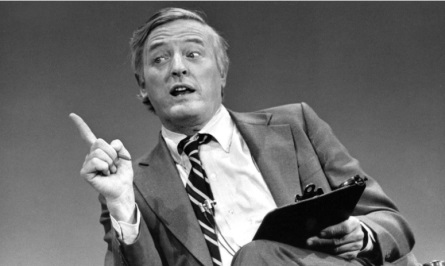
Several times, Lowenstein was one such guest. Already established as a duo in American punditry, he and Buckley began debating one another on stage but off camera in 1961.[53]
As they brought their chemistry to the medium of television, some might perceive Buckley’s attempts at getting under Lowenstein’s skin a sort of entertainment, especially when borrowing from the known reservoir of caustic conservative quips. Lowenstein’s resilient comebacks at times appeared clever, other times staged, although Buckley insisted to his audience that Firing Line was always unrehearsed.
At best, the pair would be mutually amused at how far from the perceived center the other’s arguments would stray. The smiles that would appear on their faces appeared to be genuine, and off camera, they were even closer friends.
These televised discussions of thin-lipped grimness set a standard that continued in the 1980s with self-described “liberal” host Tom Braden in a show called Crossfire, and well into the new millennium which by then had fused left and right politics together into one unopposed host in Charlie Rose.

In this way, political issues and the approach to which they are presented and debated is demonstrated for the American public, and whether or not you could understand what was being said, or endure the tedium when a good portion of the show might take up exacting questions about some minor detail, the viewers took what they could of these issues into their daily lives. The overall effect was guided by an exacting balance of right and left politics to help manipulate, not inform, those who happened to be watching.
Buckley and Lowenstein rarely discussed anti-communist liberalism, which formed almost subliminal boundaries to these exchanges. If a mutual understanding between the two allowed the host to claim the show was unrehearsed, the actors knew in advance not to talk about certain things.
Meanwhile, Buckley rarely talked about his service with the CIA, which took place in Mexico during the early 1950s, nor did guests usually confront him about it.[54] Imagine as well in the 1980s watching Crossfire with a much more vicious type of Reagan-era conservatism, while the so-called liberal moderator rarely mentions his service with the CIA.
Highly political television illustrates the irony of how conservatives and liberals in America operate from similar playbooks, but it demonstrates something more important. CIA influence takes many forms, especially secret money, but the trickiest secrets are things the players on both sides agree not to mention.
Just as William F. Buckley did not begin each television program he hosted with a disclosure that he once worked for the CIA, neither did Tom Braden. Still, they held themselves out as genuine American conservative and liberal respectively, while their work for the CIA becomes an obscure matter of public record. The same goes for others espousing journalistic integrity, including Washington Post editor Ben Bradlee, whose death in 2014 elicited those who knew him well enough to write lengthy obituaries, typically omitting any mention of his service to the CIA, even though that is also a matter of public record.
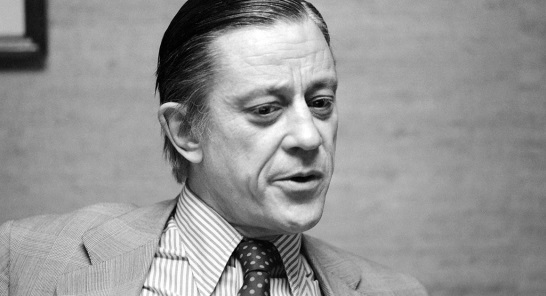
Television viewers learn to look beyond what they are watching and accept a little fakery if they can be entertained. Lowenstein’s audience was also entertained, and his legacy as a television pundit almost loomed as high as his Dump Johnson movement or even the modest single term he held in Congress.[55] That speaks volumes about how importantly the well-scripted dialogue of liberal anti-communists of the Cold War helped control the people loyally rooting for them.
Conclusion
If anything, these five stations of Lowenstein’s life show him dancing from one politically potent situation to another. Fancy footwork aside, put this in the context of the caustic exchange between Hertzberg and Cummings five years after Lowenstein’s death. Then ask upon what grounds suspicions of Lowenstein’s involvement with the CIA rest.
Those who indeed harbor suspicions probably recognize the style of attack Hertzberg made on Cummings. In an almost identical manner, Myra MacPherson of The Washington Post also attacked Cummings, even referring to the same “telephone-book-sized” file Hertzberg used, conveniently provided by editors unknown with their review copies of Cummings’s book, Pied Piper.
Truth has a way of being indifferent to whether something is the size of a telephone book or a comic book. Nevertheless, it would probably be hasty to accuse Hertzberg and MacPherson of being witting players in anything, more likely very useful unwitting journalists who write according to a rule of honesty and behest of their editors, but who have never bothered to seep themselves in the abyss of facts that do not add up in the deeds of the Cold War anti-communist liberals.
Political scientists like to distinguish “big C” Communism from “little c” communism, but the anti-communist liberals during the Cold War ran roughshod over nuances and publically shamed anyone who did not follow suit. Cold War myth dumbed us down with artificial feelings, especially among those bright young minds that followed Lowenstein with the promise of some sort of political maturity that they never attained—at least not according to his model.
CIA money to international student organizations and labor unions served the purpose of containing communism from the top of those organizations down. It was not a subtle process, but those receiving funds kept it quiet so that they could receive more funds. This process of doling out secret money fed the careers of ambitious people, while an older generation learned the pecuniary advantages of swinging their once left-leaning politics to the center, if necessary.
If the Cold War is indeed over, doesn’t it make sense to pick apart the old intelligence network and try to heal the destructive path it left behind? To that end, Lowenstein makes for a piece of the puzzle that fits snugly into this much bigger picture.

-
Although Eleanor Roosevelt’s politics moved to the center after the death of her husband, J. Edgar Hoover is said to have kept one of the thickest files in his secret watch list on her. If anti-communist liberals such as Ms. Roosevelt became darlings of the CIA, the FBI appears to have still been suspicious of them. See “FBI Files on Eleanor Roosevelt” in PBS, “American Experience,” https://www.pbs.org/wgbh/americanexperience/features/eleanor-fbi/. ↑
-
Lowenstein’s utmost reverence for Eleanor Roosevelt, Frank Porter Graham and Norman Thomas as sacred people in his life is emphasized by his two primary biographers. First, it is described as “a peculiar pecking order of senior people,” in Richard Cummings, The Pied Piper: Allard K. Lowenstein and the Liberal Dream (New York: Grove Press, 1985), 60; second, as a “pantheon of heroes” in William H. Chafe, Never Stop Running: Allard Lowenstein and the Struggle to Save American Liberalism (New York: Basic Books, 1993), 87. ↑
-
See my previously published articles about Lowenstein’s assassination for more details. Gregg Wager, “Not Guilty by Reason of Mind Control? The strange case of assassin Dennis Sweeney and the murder of Rep. Allard Lowenstein,” Deep Truth Journal, Vol. 1, Issue 2, Fall/Winter 2019, pub. 2020, 58-61; reprinted as part of “The Assassination of Allard Lowenstein,” garrison: the Journal of History & Deep Politics, Issue 007, June 2021, 167-75. ↑
-
Hendrik Hertzberg, “The Second Assassination of Al Lowenstein,” The New York Review of Books, October 10, 1985, https://www.nybooks.com/articles/1985/10/10/the-second-assassination-of-al-lowenstein/; and Richard Cummings, et al., “Allard Lowenstein: An Exchange,” The New York Review of Books, January 30, 1986, https://www.nybooks.com/articles/1986/01/30/allard-lowenstein-an-exchange/. The Washington Post had already scooped Hertzberg by seven months with a review of Cummings’s book, complete with mention of the “large as a telephone book” list of inaccuracies in Cummings’s research. Myra MacPherson, “Al Lowenstein’s Tangled Legacy,” The Washington Post, March 5, 1985, https://www.washingtonpost.com/archive/lifestyle/1985/03/04/al-lowensteins-tangled-legacy/edae458a-1ac9-4b88-83dd-587a5a65abf3/. Obviously Grove Press provided the review copies of Cummings’s book but did not provide this list of “inaccuracies,” which even included depositions from witnesses. Someone serving among the chain of editors with authority to assign the reviews must have agreed to provide the list to the reviewers, which could not help but remarkably influence the reviewers’ final opinions. ↑
-
Cummings, Pied Piper. ↑
-
One of them was Joseph Rauh, a prominent member of Americans for Democratic Action (ADA) and former lawyer for the powerful United Auto Workers (UAW). Among many activities involving Lowenstein, he helped raise money for his campaign for Congress. Cummings, Pied Piper, 381. Chafe describes Rauh as Lowenstein’s “old ally.” Chafe, Never Stop Running, 448. ↑
-
By 1985, Barney Rosset (1922-2012) was ending his long and infamous career at Grove Press. He was an intrepid book publisher specializing in famously banned, mostly erotic fiction by noteworthy authors. An excellent treatment of this and other prominent episodes of American culture during the earlier part of Lowenstein’s life has been published recently. Louis Menand, The Free World: Art and Thought in the Cold War (New York: Farrar, Straus and Giroux, 2021), 367-72. ↑
-
Jonathan Stevenson, A Drop of Treason: Philip Agee and his exposure of the CIA (Chicago: University of Chicago Press, 2021), 212; it was a shocking detail indeed to learn a few years ago in genealogical research that Agee’s first wife and mother of his two sons was my second cousin once removed, Janet Marie Wasserberger (1935-2006) and was the subject of gossip from one of my very familiar great aunts who, I then learned, loved to talk about “the spy.” ↑
-
Jeff Schuhrke, “Reckoning With the AFL-CIO’s Imperialist History” Jacobin, January 2020, https://jacobinmag.com/2020/01/afl-cio-cold-war-imperialism-solidarity. ↑
-
Sol Stern, “A Short Account of International Student Politics and the Cold War with Particular Reference to the NSA, CIA, etc.” Ramparts 5, No. 9, March 1967, 29-39. The story actually broke the previous month when Ramparts took out advertisements in The New York Times and The Washington Post announcing the findings. ↑
-
See Wilford, The Mighty Wurlitzer, 251-52. ↑
-
In his published rebuttal to Hertzberg, Cummings mentions the Vaughn Index indicating an NSA-CIA relationship in 1949. Hertzberg himself guardedly admits in his response that these new documents “suggest” but do not “establish” that such a link existed. Cummings, et al., “Lowenstein: An Exchange.” A Vaughn Index was an agency’s argument that certain documents not be released for an FOIA request, based on Vaughn v. Rosen, 484 F.2d 820 (D.C. Cir. 1973), cert. denied, 415 U.S. 977 (1974). In other words, Cummings must be assuming that because the CIA submitted a Vaughn Index for documentation between the NSA and CIA in 1949, there must be something to hide. ↑
-
Cummings, Pied Piper, 38; he also claims the FBI monitored the early meetings (91). ↑
-
Cummings, Pied Piper, 65; although very stingy about allowing innuendo and circumstantial evidence to prove Lowenstein’s connection to the CIA, even Chafe, who in his biography normally downplays Lowenstein’s links to the CIA, must admit that Lowenstein had to know something about the CIA’s influence of the NSA. Chafe, Never Stop Running, 106-07. ↑
-
The drama of how this information came to light is most recently described in Menand, Free World, 707-17. ↑
-
Nancy M. Paget, Patriotic Betrayal: The Inside Story of the CIA’s Secret Campaign to Enroll American Students in the Crusade Against Communism (New Haven: Yale University Press, 2015); see also Menand’s review of this book, Louis Menand, “A Friend of the Devil: Inside a famous Cold War deception,” The New Yorker, March 23, 2015, https://www.newyorker.com/magazine/2015/03/23/a-friend-of-the-devil. ↑
-
Paget herself had signed such a secrecy oath, as described in her book. Paget, Patriotic Betrayal, 4. ↑
-
See above, footnote 10. ↑
-
“In the Pay of the CIA: An American Dilemma,” produced by Ron Bonn, News Special, Columbia Broadcasting System, March 13, 1967, https://www.reddit.com/r/Documentaries/comments/l4bucf/in_the_pay_of_the_cia_an_american_dilemma_1967_a/. ↑
-
Joseph Rauh (the same lawyer who helped prepare Hertzberg’s review of Cummings) represented a class action lawsuit in Canada, where an alternative mainstream media freely discusses the CIA’s covert domestic misdeeds known as MK ULTRA. Orlikow v. United States, 682 F. Supp. 77 (1988). ↑
-
Paget, Patriotic Betrayal, 79; cf. Cummings, et al., “An Exchange.” ↑
-
Paget, Patriotic Betrayal, 82. ↑
-
Lowenstein got “mostly Cs,” but flunked trigonometry. Chafe, Never Stop Running, 59. ↑
-
After two years in law school, Lowenstein ranked 85th out of 203. Chafe, Never Stop Running, 114. ↑
-
See above, footnote 21. ↑
-
See above, footnote 1. ↑
-
Wilford, The Mighty Wurlitzer, 91-92. See also Ari Nathan Cushner. “Cold War Comrades: Left-Liberal Anticommunism and American Empire, 1941-1968.” Ph.D. dissertation. University of California at Santa Cruz, 2017, 28, https://escholarship.org/uc/item/2z1041sr. ↑
-
Wilford, The Mighty Wurlitzer, 92. ↑
-
Chafe, Never Stop Running, 59; Cummings goes into more detail about Lowenstein’s status working for Hubert Humphrey. Cummings, Pied Piper, 73-74, including his status as “foreign policy advisor” (77), and how he received a “leave of absence” for his second trip to Africa (87). ↑
-
Beukes finally published a book too. Hans Beukes, Long Road to Liberation: An Exiled Namibian Activist’s Perspective (Pinegowrie, South Africa: Porcupine, 2014). Chafe claims “no African [i.e., Black] had ever been allowed to leave….” Chafe, Never Stop Running, 138; Cummings says Beukes was the “second nonwhite” allowed to leave. Cummings, Pied Piper, 91. ↑
-
The book covers much more ground than simply Beukes, and the overall tone makes it sound like a mission for the United Nations. Allard K. Lowenstein, Brutal Mandate: A Journey to South West Africa (New York: Macmillan, 1962). ↑
-
At no point in Brutal Mandate does Lowenstein mention Scott’s former affiliation with communism, only that he had a reputation as a “crackpot.” Lowenstein, Brutal Mandate, 4. ↑
-
Chafe, Never Stop Running, 132-33; Cummings, Pied Piper, 73-74; Lowenstein, Brutal Mandate, 6-7. ↑
-
See “Michael Guthrie Scott” at “South African History Online,” https://www.sahistory.org.za/people/michael-guthrie-scott. ↑
-
Hertzberg used Bundy’s point of view to bolster his attacks on Cummings. Cummings, et al., “Allard Lowenstein: An Exchange.” ↑
-
Lowenstein, Brutal Mandate, 55. ↑
-
Wilford mentions a payment of $10,000 in $50 bills Tom Braden made to Walter Reuther to give to his brother Victor Reuther in Europe. Wilford, The Mighty Wurlitzer, 63. ↑
-
Chafe, Never Stop Running, 137. ↑
-
Cummings points out that Lowenstein received help in preparing the manuscript from Curtis Gans, who would also be Lowenstein’s partner in the “Dump Johnson” movement. Cummings, Pied Piper, 130. ↑
-
Chafe credits Lowenstein’s “old friend” William Gregory Craig (1914-2005) for procuring Lowenstein his job at Stanford. Chafe, Never Stop Running, 168; Cummings mentions the friendship with Craig going back to 1951, when Lowenstein was establishing a chapter of the NSA at Washington State University, Cummings, Pied Piper, 129. ↑
-
David Harris, Dreams Die Hard: Three Men’s Journey Through the Sixties (New York: St. Martin’s/Marek, 1982), 169. ↑
-
See generally Merle Miller, Plain Speaking: An Oral Biography of Harry S. Truman (New York: Berkley, 1974). ↑
-
In German, the articulation is “Eiserner Vorhang.” Paul Joseph Goebbels, “Das Jahr 2000,” Das Reich, February 25, 1945, 1-2; the term was previously used anonymously in Nazi literature in “Hinter dem eisernen Vorhang,” Signal, May 1, 1943, 2. ↑
-
David Talbot, Devil’s Chessboard: Allen Dulles, the CIA, and the Rise of America’s Secret Government (New York: HarperCollins, 2015), 29-30. ↑
-
What has now become an almost infamous meme among American conservatives—that Chamberlain was naïve to cut a deal with Hitler in Munich for “peace in our time”—has been upended by the Roundtable conspiracy theorists who believe Chamberlain was in on a secret deal to give Hitler Austria, Czechoslovakia and Poland, which for some unknown reason was welched upon much to Hitler’s surprise. See Gerry Docherty and Jim MacGregor, Hidden History: The Secret Origins of the First World War (Edinburgh: Mainstream Publishing, 2013). ↑
-
See Julian A. Pleasants. Augustus M. Burns, III, Frank Porter Graham and the 1950 Senate Race in North Carolina (Chapel Hill: University of North Carolina Press, 1990) no pagination. ↑
-
Raymond F. Gregory, Norman Thomas: The Great Dissenter (New York: Algora, 2008) 186. ↑
-
These included especially the Student Nonviolent Coordinating Committee or “SNCC,” but also Southern Conference Education Fund (SCEF), Southern Student Organizing Committee (SSOC), and Martin Luther King, Jr.’s Southern Christian Leadership Conference (SCLC), among many others, as well as larger organizations such as CORE and NAACP. Cummings, Pied Piper, 224. ↑
-
It was called the Mississippi Freedom Democratic Party (MFDP). Cummings, Pied Piper, 258. ↑
-
Chafe, Never Stop Running, 271. ↑
-
At 18 years of age, I voted for the first time in the 1976 Democratic Party presidential primary, and McCarthy received my rather naïve vote. ↑
-
Chafe, Never Stop Running, 283. ↑
-
A description from a 1961 debate at Phillips Exeter Academy in New Hampshire appears in Cummings, Pied Piper, 131-33. Buckley claimed that, while teaching Spanish at Yale ten years before the first debate, he met Lowenstein who was at that time a law student. ↑
-
As much as CIA agents are said to never retire, because as long as they keep the secrets they will always be in the game, the writing careers of both William F. Buckley and E. Howard Hunt, each with more than 40 published books, probably flourished with the help of the CIA network of influence upon the publishing world, which supported writers sympathetic to its causes. ↑
-
Very little is mentioned in this article about Lowenstein’s actual career in politics, which included several attempts and passionate campaigns for public office, but only one term as a Congressman from New York’s 5th district, 1969-1971. ↑
CovertAction Magazine is made possible by subscriptions, orders and donations from readers like you.
Blow the Whistle on U.S. Imperialism
Click the whistle and donate
When you donate to CovertAction Magazine, you are supporting investigative journalism. Your contributions go directly to supporting the development, production, editing, and dissemination of the Magazine.
CovertAction Magazine does not receive corporate or government sponsorship. Yet, we hold a steadfast commitment to providing compensation for writers, editorial and technical support. Your support helps facilitate this compensation as well as increase the caliber of this work.
Please make a donation by clicking on the donate logo above and enter the amount and your credit or debit card information.
CovertAction Institute, Inc. (CAI) is a 501(c)(3) non-profit organization and your gift is tax-deductible for federal income purposes. CAI’s tax-exempt ID number is 87-2461683.
We sincerely thank you for your support.
Disclaimer: The contents of this article are the sole responsibility of the author(s). CovertAction Institute, Inc. (CAI), including its Board of Directors (BD), Editorial Board (EB), Advisory Board (AB), staff, volunteers and its projects (including CovertAction Magazine) are not responsible for any inaccurate or incorrect statement in this article. This article also does not necessarily represent the views the BD, the EB, the AB, staff, volunteers, or any members of its projects.
Differing viewpoints: CAM publishes articles with differing viewpoints in an effort to nurture vibrant debate and thoughtful critical analysis. Feel free to comment on the articles in the comment section and/or send your letters to the Editors, which we will publish in the Letters column.
Copyrighted Material: This web site may contain copyrighted material the use of which has not always been specifically authorized by the copyright owner. As a not-for-profit charitable organization incorporated in the State of New York, we are making such material available in an effort to advance the understanding of humanity’s problems and hopefully to help find solutions for those problems. We believe this constitutes a ‘fair use’ of any such copyrighted material as provided for in section 107 of the US Copyright Law. You can read more about ‘fair use’ and US Copyright Law at the Legal Information Institute of Cornell Law School.
Republishing: CovertAction Magazine (CAM) grants permission to cross-post CAM articles on not-for-profit community internet sites as long as the source is acknowledged together with a hyperlink to the original CovertAction Magazine article. Also, kindly let us know at info@CovertActionMagazine.com. For publication of CAM articles in print or other forms including commercial internet sites, contact: info@CovertActionMagazine.com.
By using this site, you agree to these terms above.
About the Author

Gregg Wager is a composer, author, and critic.
He has written over 100 musical compositions, including a recent opera, Spectral Evidence Rhapsody. He is author of three books including The Virtuosic Mouse.
As a critic, he has written over 250 reviews for the Los Angeles Times and for the past 12 years, program notes for the Los Angeles Philharmonic.
He has a PhD in musicology from the Free University Berlin and a JD from McGeorge School of Law.
Gregg can be reached at greggwager@hotmail.com.

